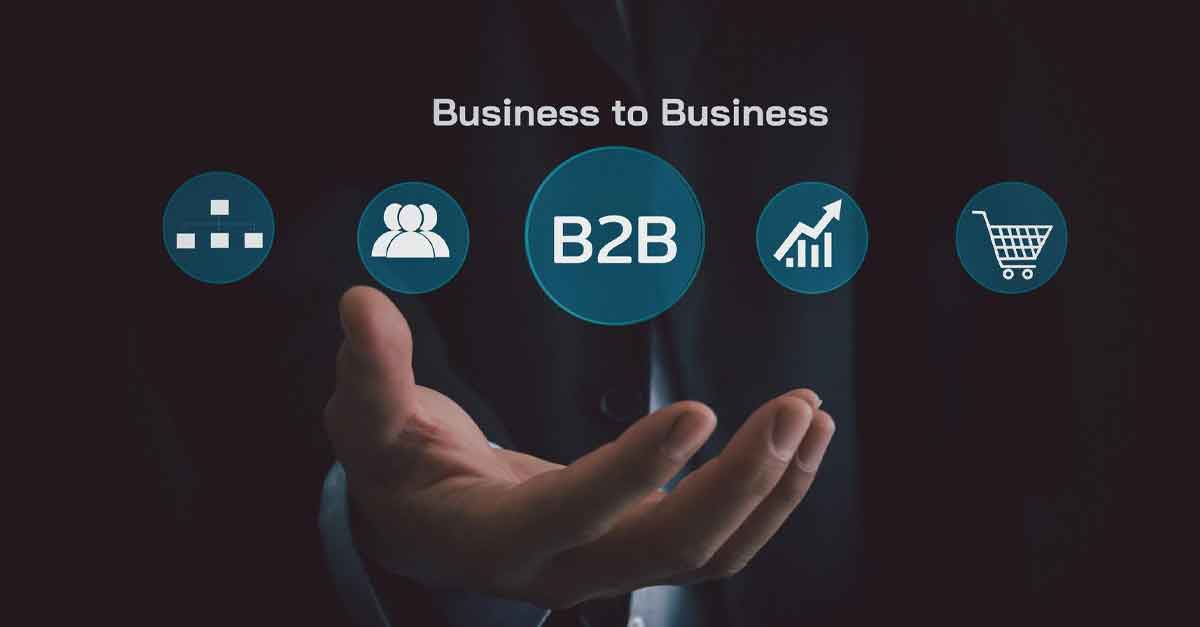The worldwide B2B eCommerce market is expected to reach $33,317.37 billion by 2030, up from $9,209.33 billion in 2023. Today, an eCommerce business has to be agile enough to sync with the latest trends and evolutions in the space. If not, it’s easy to get left behind as newer brands take over the imagination (and wallet) of the customer.
For those curious about where the B2B eCommerce market is headed, this article should help. Here’s an insight into the most relevant trends in the B2B eCommerce market.
1. Personalization Throughout the Customer Journey
A personalized buying experience is the best way to make customers feel unique and keep them engaged. Of course, the notion of eCommerce personalization isn’t novel. Businesses have been exploring this space for some time now, and understandably so.
The question is – how do brands differentiate themselves when everyone’s scaling their personalization efforts? The answer to it lies in putting forth a robust eCommerce personalization strategy that encompasses the use of personalization elements throughout the customer journey. So, we’re essentially looking at engaging experiences across, say, the storefront, the checkout, the shipment, etc. Loyalty programs, recommendation systems, unique offers, etc., are all required to be baked in to create a personalized experience that’s unparalleled.
2. Mobile-Friendly Websites
It’s now well-known that customers prefer mobile-enabled shopping methods wherever possible because of ease and convenience. In fact, it is anticipated that mobile commerce volume will reach $620.97 billion by the end of 2024.
The mobile-centric trend has become prominent because of ease of use, ease of payment, and overall ordering convenience. It’s noteworthy, however, that adapting to this trend also involves adjusting to its cons or molding it according to the brand’s requirements. Mobile commerce brings challenges such as continuous changes in technology, the inability to take loads during high traffic, and more. For a smooth journey with mobile commerce, businesses need to know their needs and should specify them as much as possible.
3. Composable Commerce
The basic technology that established the separation of the front-end presentation layer and the back-end operations was headless commerce. Composable commerce is a development of this technology that enables a company to segment its platform into distinct services. Each business capacity is independent in a composable system.
Composable commerce enables you to pick the eCommerce system elements that best suit your needs and specifications. With it, you can select top-of-the-line components, such as content management systems and marketing automation tools, to improve targeted and personalized shopping experiences, including tailored product recommendations and personalized content.
This approach often meets with the challenges of complexity and maintenance as compared to traditional platforms. However, a CX solutions expert like Ignitiv can help alleviate the difficulties and assist in realizing the full potential of composable commerce.
4. Headless Commerce
The simplest definition of headless commerce is the division of an eCommerce application’s front-end and back-end. With this design, businesses can construct anything they desire. It provides a great deal of customization. Most importantly, it gives brands the opportunity to improve the customer experience. They can swiftly roll out new front-end solutions and quickly respond to a new market trend with little hassle on the back-end development.
To increase revenues from their predominately mobile consumer base, Nike desired a mobile-first eCommerce website. They developed a “Shop the Look” part of the website using headless commerce, enabling users to seamlessly browse goods on all product category pages.
No doubt, the use of headless commerce CMS is catching attention, for it eases content management and allows for better and swift customizations across eCommerce channels — allowing for a seamless and relevant end-user experience.
5. Consumer Analytics
Customer journey analytics is the science of examining customer behavior at various touchpoints and subsequently determining how that behavior affects business results over time. eCommerce firms can use it to make data-driven decisions, improve customer satisfaction, personalize experiences, and optimize marketing efforts, all of which help them increase sales and revenue.
About 37% of B2B businesses have previously reported using sophisticated campaign measurement and analytics tools, while 33% have employed sophisticated CRM systems. This approach is becoming a necessity for businesses as they progress. Hence they will have to keep a check on what benefits consumer analytics accrues for them and how their data is dealt with.
6. Generative AI
The advent of generative AI technologies means that eCommerce companies can be better equipped to advance their product discovery and search personalization initiatives.
The simplest use case is that of search optimization, where generative AI technologies can guide users to the most relevant products by assessing their preferences and purchase history. Such streamlined product discovery would mean that eCommerce firms have a greater chance of converting consumers.
7. Omnichannel Selling
Utilizing consistent messaging across channels is a strategy firms use to ensure a seamless shopping experience for potential customers. Often, customers start off their purchasing journey on one channel and proceed to another to complete their transaction. Thus, it’s imperative that brands are able to provide a consistent customer experience across all channels. This particularly bodes well today when various order pickup options, physical and online store integration, and seamless checkouts are becoming increasingly essential to online commerce.
It’s noteworthy that though omnichannel has numerous benefits to the overall eCommerce strategy, it requires great considerations for the time factor – you must be able to deliver the content at the right time. It also poses concerns regarding data fragmentation for the business as data comes from various sources to them. Hence, to switch to omnichannel selling, businesses must assess their goals and customer segments carefully.
Conclusion
To sum up, as eCommerce continues to evolve, so must the strategies of the companies operating in the industry. The emergence of new technologies and solutions is encouraging businesses to devise new ways to enhance their eCommerce operations and leverage the advantages that these methods offer.
To that end, getting rid of outdated processes, investing in eCommerce technologies like headless and composable commerce, driving robust customer experience management initiatives, utilizing new distribution channels, etc., are all ways in which businesses can stay ahead of the competition by making informed and strategic decisions.
As a pioneer CX solutions company, Ignitiv helps you implement the right eCommerce solutions for your business. We root for every trend mentioned above and aim to provide you with the best solutions and services for your eCommerce business. For more information, connect with our experts here.








